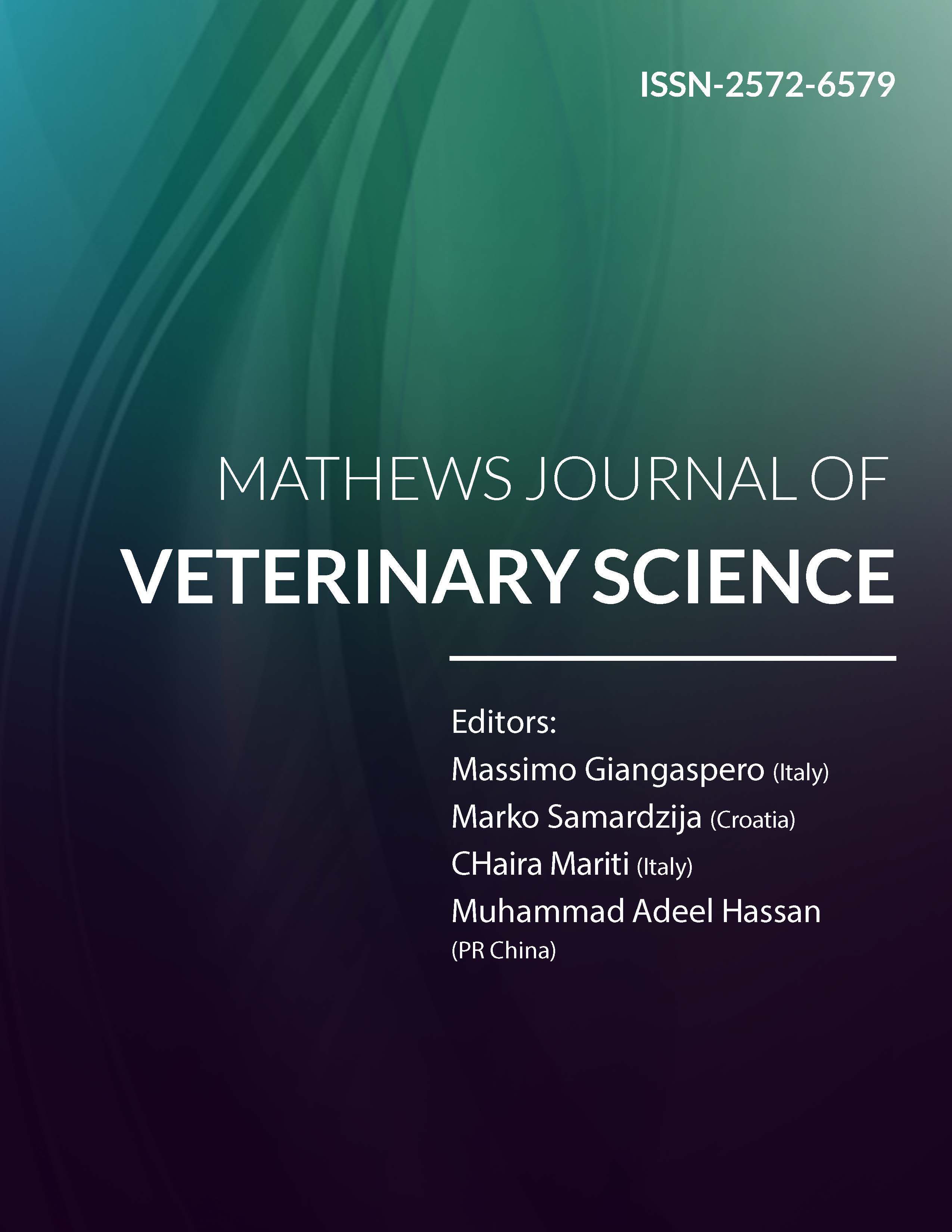
Information Links
Previous Issues Volume 7, Issue 2 - 2023
Prevalence of Bovine Lungworm and Its Associated Risk Factor in and Around Mendi Town
Mathewos Belina Woyessa1, Abdi Ahmed Umer2, Hika Waktole Ayana3
1Jimma University College of Agriculture and Veterinary Medicine, P.O. Box 307, Jimma, Ethiopia
2Animal Health Institute (AHI), Microbiology Research Laboratory, P.O. Box 04, Sebeta, Ethiopia
3Addis Ababa University College of Veterinary Medicine and Agriculture, P.O. Box 34, Bishoftu, Ethiopia
*Corresponding author: Mr. Abdi Ahmed Umer, Animal Health Institute (AHI), P.O. Box 04, Sebeta, Ethiopia; E-mail: [email protected].
Received Date: April 28, 2023
Published Date: May 19, 2023
Citation: Umer AA, et al. (2023). Prevalence of Bovine Lungworm and Its Associated Risk Factor in and Around Mendi Town. Mathews J Vet Sci. 7(2):22.
Copyrights: Umer AA, et al. © (2023).
ABSTRACT
A cross-sectional study was conducted in and around Mendi Town, Oromia regional state, west Ethiopia, from September to January, 2019 intended to determine the current status of bovine lungworm prevalence and its associated risk factor. A total of 384 cattle fecal samples were collected randomly and transported to Mendi Type B Veterinary Clinic Parasitology laboratory for larvae identification. Out of 384 fecal samples examined coprologyically, 18 showed positivity for lungworm infection with an overall 4.7% prevalence applying chi-square(x2) descriptive statistics. Age, sex, breed and management systems were considered as risk factors for the occurrence of the disease. Chi-square analysis indicated statistically significant association between age groups, body condition score and management systems and the disease (P<0.05) and non-significant association between breed, sex and the disease (P>0.05). The prevalence of lungworm by sex was found to be 6.3% and 3.7% in coprological examination of females and males, respectively. Prevalence of 7.0% and 1.8% were observed in animals of 1-5 years of age and animals of above 5 years, respectively. Highest prevalence was observed in extensive management system (8.6%) as compared with semi-intensive (4.5%) and intensive (0%) management systems. Analysis of lungworm infection by breed showed a higher prevalence in cross breeds (6.3%) than local breeds (4.4%). Moreover, the degree of infection by body condition score was assessed indicating 9.0%, 5% and 0.8% for poor, medium and good body conditioned animals, respectively. The study concluded that the prevalence of bovine lungworm in the study area was more associated with young stock in extensive and semi-intensive management systems.
Keywords: Cattle, Coprology, Mendi, Lungworm, Prevalence.